Throughout the summer, Food Banks Canada embarked on a six-week virtual “road trip” from coast to coast to coast, putting food banks and food insecurity organizations from across the national network in the driver’s seat for a series of Instagram takeovers.
Beginning in July at Nanaimo Loaves and Fishes in B.C., and concluding in late August at Feed Nova Scotia on the eastern seaboard, our virtual summer road trip taught us something new about the spirit of food banking with each stop, and we were blown away by the determination of folks who are working hard to keep their neighbours fed.
At the Loaves and Fishes Food Bank in Nanaimo, B.C., we saw how the dedicated staff and volunteers are able to serve 2,000–3,000 individuals every month through their network of local food distribution depots. Nanaimo Loaves and Fishes also features a central warehouse that delivers food to local non-profits, food banks, schools and Indigenous communities, reaching roughly 15,000 people in need across all of Vancouver Island.
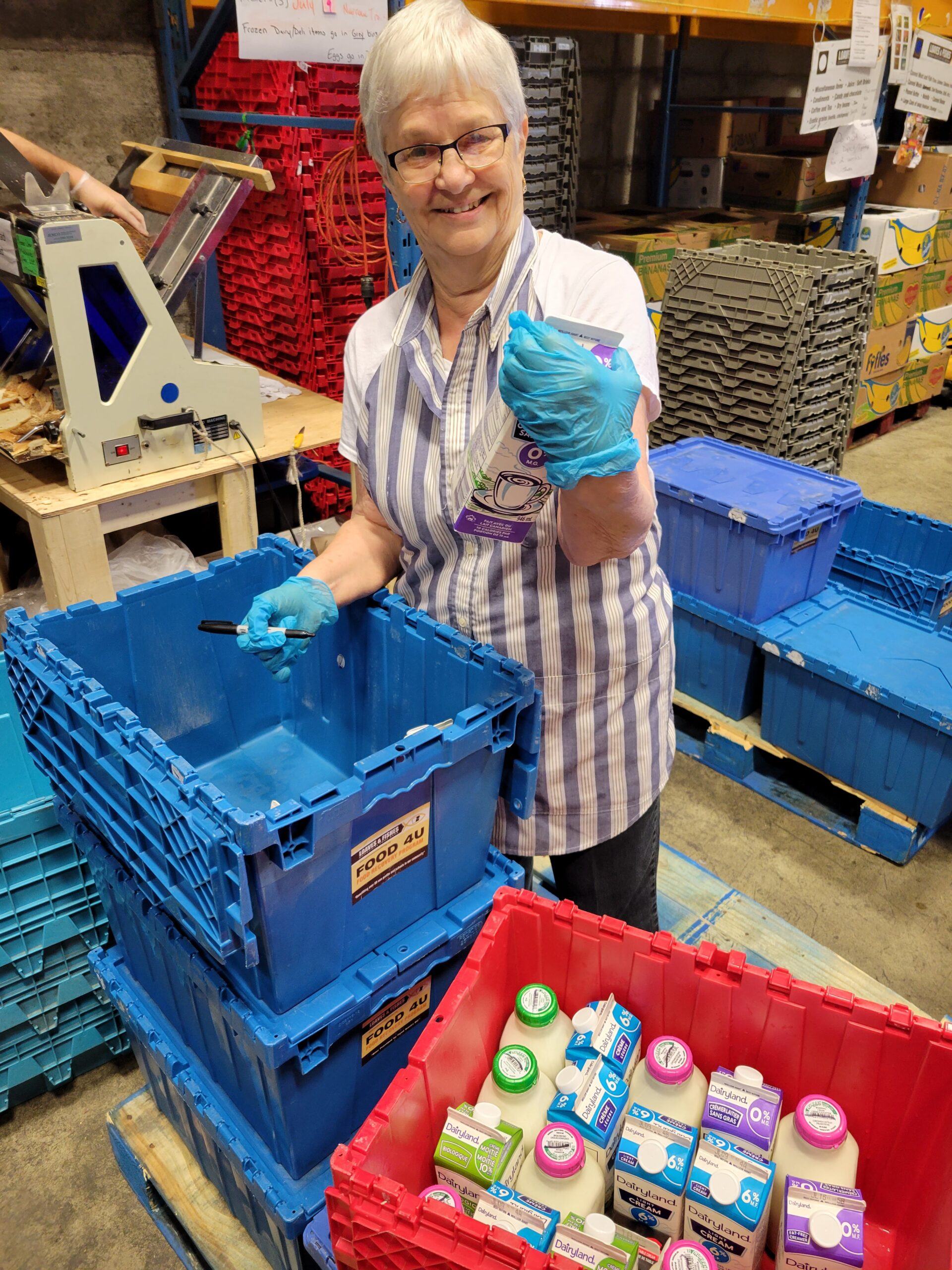
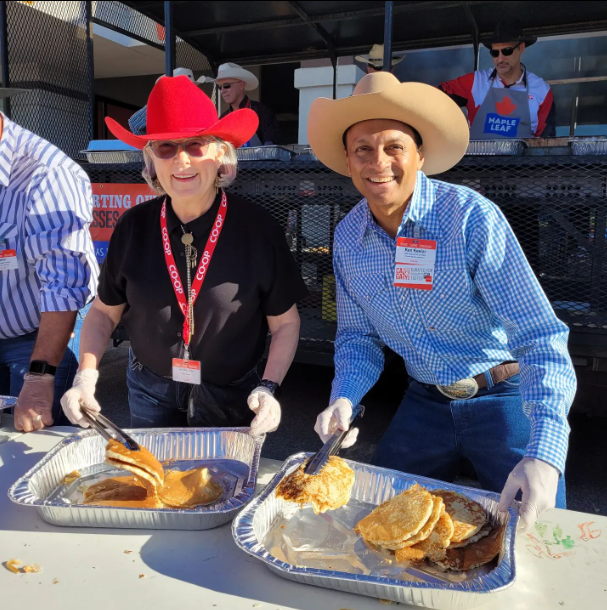
Buoyed by the fresh island air, our virtual summer road trip then headed east to visit friends in Alberta at the @calgaryfoodbank, where the hardworking staff and volunteers showed us how they provide 121,800 food hampers — the equivalent of 4.1 million meals — to folks in need each year.
Despite all of this amazing work, Betty Joe Kaiser of the Calgary Food Bank also touched on a troubling trend across the country — that food bank demand is way, way up.
“People from all walks of life can experience crisis,” Kaiser says. “We know that the first thing cut from budgets when money is tight is the food.”
With Food Banks Canada’s mission to end hunger front of mind, we continued to make our way east, pulling up at the Saskatoon Food Bank and Learning Centre where we learned that their core emergency services include an urban farm adorably known as the Garden Patch, a nutrition program, a clothing depot, a tax clinic, cooking classes, and educational programs and workshops to enhance the employability of their clients.
One of the most innovative employment services available at the Saskatoon Food Bank and Learning Centre was Career Exploration in VR, which allows clients to try out different kinds of work, such as heavy machine operation, right from the food bank building.
To round out our tour of the prairies, we visited our pals at Harvest Manitoba, where we learned that they serve over one million pounds of food to 85,000 Manitobans every month in partnership with local food banks and agencies.
We also discussed the critical work that Food Banks Canada has been doing in partnership with Harvest Manitoba as part of our efforts to reach remote Indigenous communities in the Far North, such as Shamattawa and Fort Severn.
WATCH: Relieving hunger along the ice roads
Over 2,000 kilometres later, our summer road trip arrived in the nation’s capital to hand over the keys to the Ottawa Food Bank, which echoed the concerns from across the national network about a sharp spike in need on the frontlines.
Although the Ottawa Food Bank was already serving approximately 44,000 people per month before the beginning of the COVID-19 pandemic, they are now seeing 51,000 folks walk through their doors on a monthly basis, representing a 39 per cent increase in demand.
Thanks to the Ottawa Food Bank’s 8-acre Community Harvest Farm, however, they’re able to ensure that 40 per cent of the food they distribute is fresh. And the food bank is ready to meet the growing demand alongside their supportive network of volunteers, delivery drivers, donors, farmers, community fundraisers, advocates, corporate partners, and member agencies.
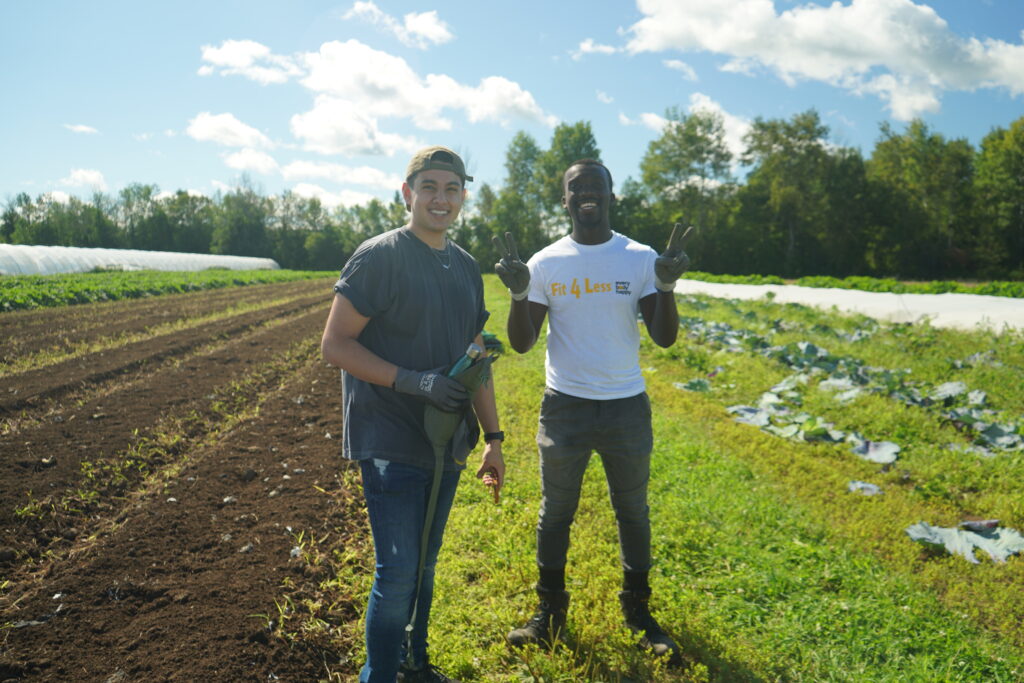

Après ça, we arrived dans la belle province du Québec chez Moisson Montreal. Having been in operation since 1984, Moisson Montreal provides food aid to over 300 agencies and community organizations.
Moisson Montreal gave us a tour of their impressive warehouse, which includes a facility to prepare and process fresh fruits and vegetables so that they last longer and can be distributed during winter. Thanks to these efforts, they were able to increase their supply of unprocessed fruits and vegetables by more than 45 per cent last year.
Swapping our virtual wheels for virtual wings, we landed in Iqaluit, Nunavut at the Qajuqturvik Community Food Centre. What began as a humble soup kitchen in 2007 now offers emergency food services, cooking classes, summer camps, advocacy initiatives, training, workshops, and more to folks in need across the territory’s largest city.
At Food Banks Canada, we know that the causes of food insecurity, which are poverty and low incomes, are further exacerbated in the north due to the attempted destruction of local food systems by colonial powers. This is why the Qajuqturvik Community Food Centre makes supporting hunters and harvesters a central part of the work they do, while also advocating for policies to address poverty in Nunavummiut.
For instance, the Qajuqturvik Community Food Centre’s pay-what-you-can country food box program helps keep traditional foods, such as Arctic char, ring seal, narwhal and polar bear, affordable while also providing local hunters with a consistent source of income.
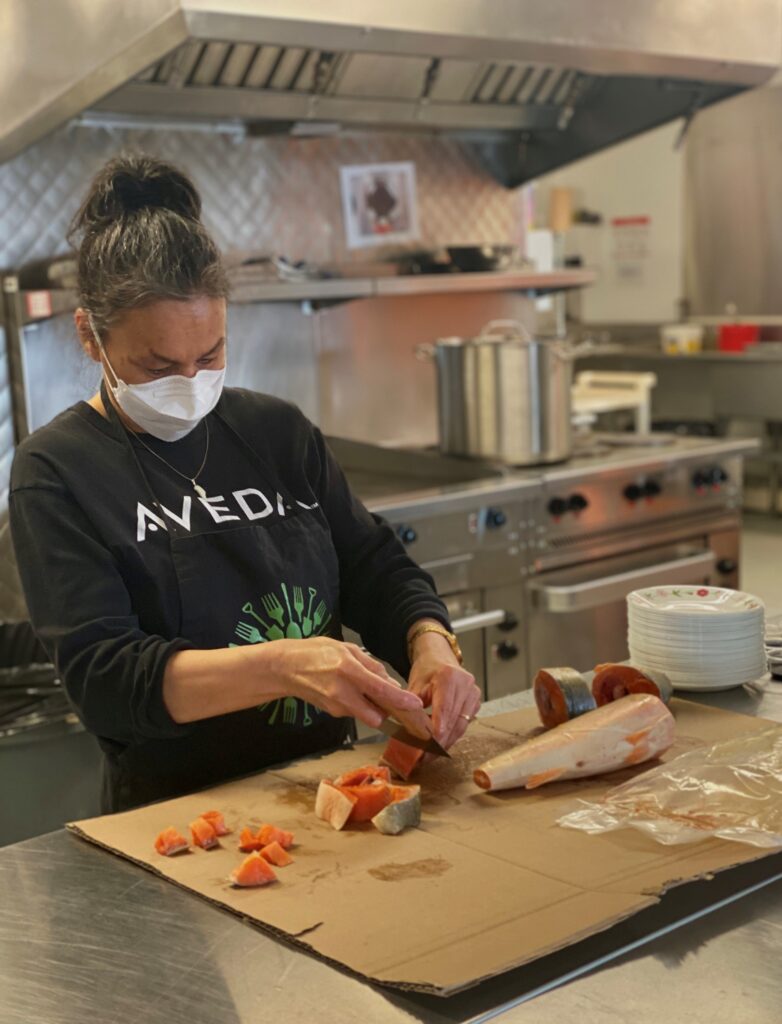

After heading out to the Atlantic provinces for the final leg of our road trip, our hosts in P.E.I. at The Upper Room Hospitality Ministry exemplified their name, throwing their doors wide open for a warm welcome. They first began operating in 1984 as a volunteer-run soup kitchen, and now work as a hybrid organization that includes a food bank and provincial association.
The Upper Room Hospitality Ministry showed us around their digs, introduced us to their dedicated volunteers, and told us that like elsewhere in Canada, the skyrocketing cost of living is driving an increase in need, with many of the 3,600 people accessing their services each month doing so for the very first time.
“When it comes to Prince Edward Island, community helps community. We are blessed with very big hearts around us,” says Nicole Mountain of The Upper Room Hospitality Ministry. “The increase in need has been hard to witness as we see so many community members struggling.”
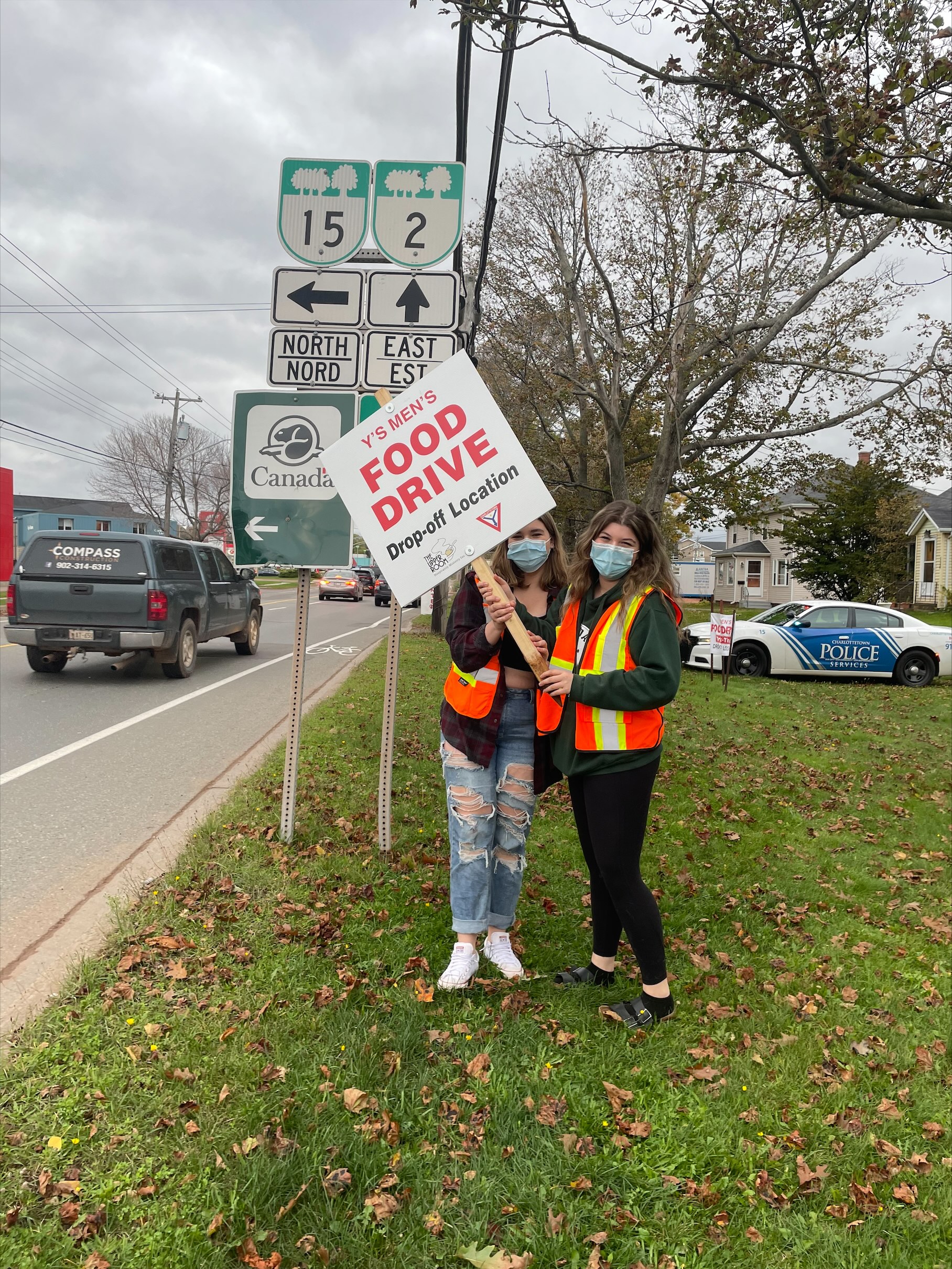
Volunteers for the Upper Room Hospitality Ministry are pictured in P.E.I.

A short hop, skip and a jump later, our road trip arrived on the doorstep of Greener Village in Fredericton, N.B. One of the first food charities in the area, they opened their doors as The Fredericton Food Bank in 1983 before transitioning to their current building that once housed a plant nursery in 2012.
Greener Village gave us an incredible aerial tour of their community garden, and we even tried on a few fun outfits at their Unique Boutique, which offers pre-loved clothing to clients.
In late August, we cruised into the final stop of our virtual summer road trip: the Feed Nova Scotia offices in Dartmouth. They first started serving the Halifax area as the Metro Food Bank Society in 1984 before growing to become the umbrella organization for food banks across the province in 2002.
Feed Nova Scotia now annually distributes more than three million kilograms of food to 140 food banks, meal programs and shelters. And, in addition to helping Nova Scotians meet their essential need for food, they’re also raising awareness about the root causes of food insecurity — like systemic racism, low wages, inadequate income support and unaffordable housing — and advocating for sustainable, policy-based solutions that will allow everyone to thrive and live a life of dignity.

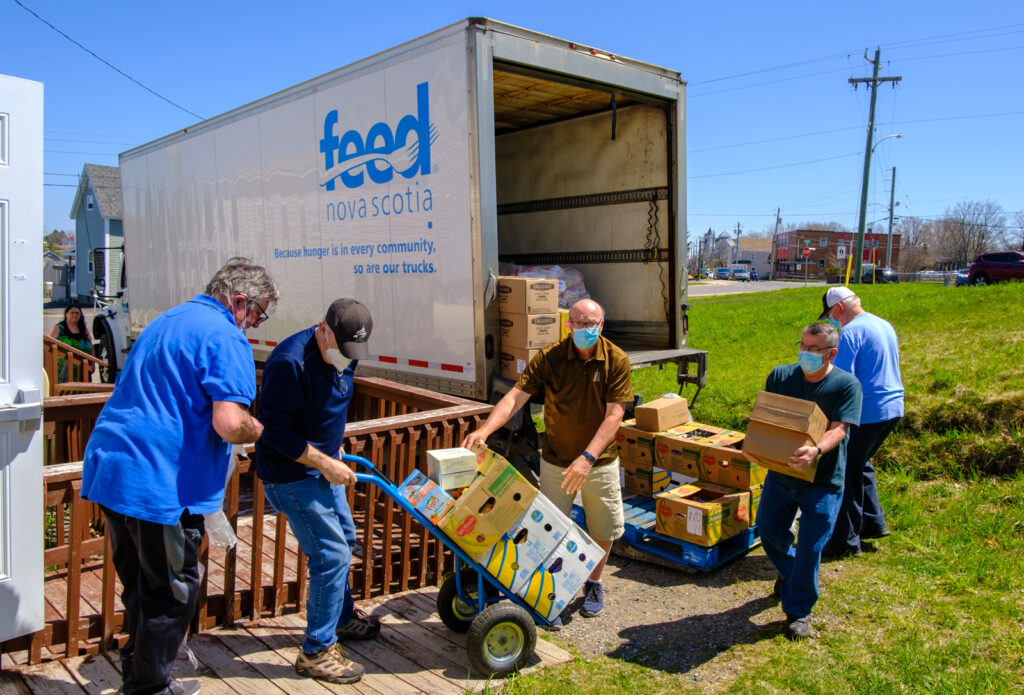
Now that we’re home from our summer road trip and our suitcases are (mostly) unpacked, we can see that two troublesome trends are emerging across the country. First of all, the demand for food banks is increasing, driven by soaring inflation. Second, many of the individuals in need are first-time users who have never had to depend on a food bank for support before.
According to a national survey conducted by Food Banks Canada earlier this year, one in four people admit to skipping meals or eating less than they should because they simply can’t afford it. Further, 61 per cent of those people reported that housing was their biggest obstacle in being able to afford enough fresh food.
This is why it is critical for us to advocate for the government to introduce new supports for renters living with low incomes, and provide every Canadian with a minimum income floor so they can lift themselves up and move ahead.